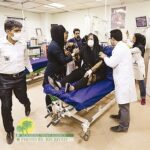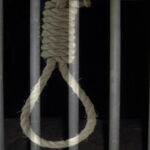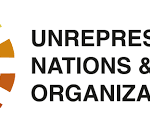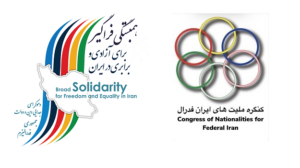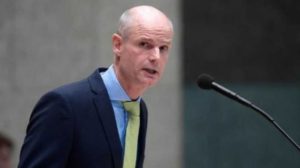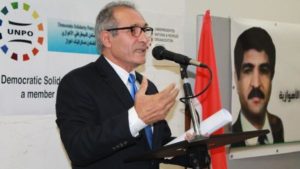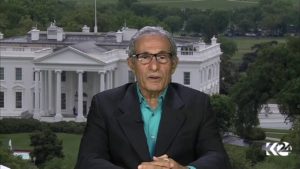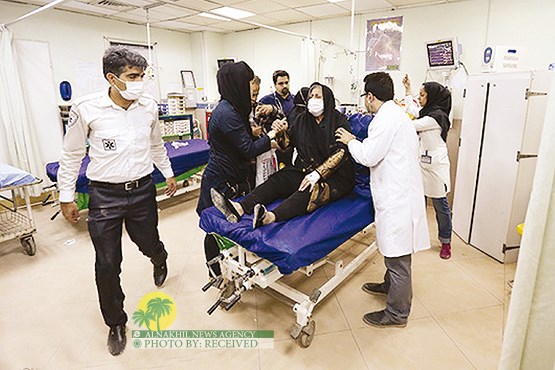Today, April 15, marks the ninth anniversary of one of the most bloody yet poorly known uprisings in the Middle East. The peaceful Ahwazi intifada against forced displacement, discrimination and persecution against the indigenous Arabs of southwest Iran in 2005 was met with extreme brutality. The Iranian regime gunned down at least 130 unarmed Arab civilians in cold blood in the first few days of the civil unrest in order to restore control to the oil-rich region. At least 2,000 were incarcerated and more killings were carried out, judicial and extra-judicial, in the following months and years.
bloody yet poorly known uprisings in the Middle East. The peaceful Ahwazi intifada against forced displacement, discrimination and persecution against the indigenous Arabs of southwest Iran in 2005 was met with extreme brutality. The Iranian regime gunned down at least 130 unarmed Arab civilians in cold blood in the first few days of the civil unrest in order to restore control to the oil-rich region. At least 2,000 were incarcerated and more killings were carried out, judicial and extra-judicial, in the following months and years.
These protests are continuing and are often spontaneous. Even recent football matches have turned into mass protests, with fans chanting: “The people will topple the regime…Leave, leave Rouhani (the Iranian president)…This land has lions, no one can come near it.”
The persecution of Iran’s highly impoverished Ahwazi Arab minority has intensified under the administration of President Hassan Rouhani, in spite of his rapprochement with the West over the country’s nuclear programme.
Rouhani claimed during his presidential campaign that he would address ethnic demands in order to win support from the non-Persian half of the Iranian population. This attracted votes from the persecuted Ahwazi Arabs, who are indigenous to southwest Iran. However, on the ninth anniversary of the peaceful Ahwazi Arab intifada, an ever increasing number of Ahwazi activists are being put to death. Indeed, te most peaceful cultural activists are often the ones being targeted for the most violent reprisals by the Iranian state.
Last week, ahead of the anniversary of the 2005 uprising, the Iranian security forces began a new wave of arrests in Al-Ahwaz in what has become an annual ritual of violent repression. On 9 April, intelligence services arrested 25 year old activist Aref Sorchi, who had been arrested three times previously, most recently at a funeral of the poet Molah Fazel.
Sorchi remains in the custody of the intelligence services for his role in a “shouting silent march” in which placards were raised saying “our heritage is our lives, its death our death”, stressing the importance of the historical monuments of Ahwaz Arabs and need to preserve them. Ammar Abayat was also arrested during a peaceful protest against the destruction of the Abdulhamid palace, which was built by the last Arab ruler of Al-Ahwaz Sheikh Khazaal Kaabi.
Meanwhile, concern is growing over the fate of two Ahwazi Arab men on death row, Ali Chebieshat and Sayed Khaled Mousawi, who were recently transferred from Fajr Prison in Dezful in Al-Ahwaz to an unknown location, sparking fears their execution may be imminent. They were sentenced to death on 9 September 2013 by Branch Two of the Revolutionary Court in Ahwaz City on the charge of “enmity against God” (moharebeh) in relation to the explosion of a natural gas pipeline, in spite of no casualties and no proof the men were near the scene. The court sentenced a third man, Salman Chayani, to 25 years’ imprisonment to be served in internal exile in Yazd, central Iran.
According to Amnesty International, the three men were denied access to lawyers and their families for the first several months of their detention and are believed to have been tortured or otherwise ill-treated. Far from being hardened terrorists, according to accounts by those who know them the three Arab men have a humble background and were only ever interested in giving young people in their community a good education. All were members of the Al-Shabab (Youth) Cultural Institute of Shush which educated young people in Arabic language and culture. Following months of torture, they were forced to confess to bomb attacks on a pipeline and a railway track in interviews with Press TV ahead of their sentencing by a revolutionary court last September. They have appealed against their death sentences, which are still under consideration by the Supreme Court.
Two other Ahwazi Arab men were secretly executed in January 2014 after their transfer to an unknown location. Hadi Rashedi and Hashem Shabani were executed and buried in secret, although both stated that they opposed the use of violence to assert Arabs’ political demands. Three other Ahwazi Arab men, Mohammad Ali Amouri, Sayed Jaber Alboshokeh and Sayed Mokhtar Alboshokeh, who had been sentenced to death along with them, remain at risk of execution. All were founding members of Al-Hiwar, a cultural institute that promoted Arabic education, literature and cultural activities among deprived Ahwazi Arab youth.
Hadi Rashedi was a highly qualified high school teacher with a keen interest in cultural issues and advocacy for the poor. Before his trial, Rashedi suffered considerable mental stress and sustained broken bones as a result of beatings. Hashem Shaabani, who was married with one child and educated to a post-graduate level in Arabic and political studies, had written poetry in Arabic and Farsi and taught Arabic language and literature in high schools. He was a cultural, civil and student activist and also a blogger. Both men were forced to confess on Press TV to being involved in separatist terrorism and supporting Ba’athism in Iraq. They were also made to claim that they had assistance from Hosni Mubarak and Muammer al-Qadafi, the former rulers of Egypt and Libya.
In a letter smuggled out of prison, Shabani wrote that he had written blogs and essays critical of the treatment of minorities in Iran, including “hideous crimes against Ahwazis perpetrated by the Iranian authorities, particularly arbitrary and unjust executions. Through this reporting, I was defending the legitimate right that every nation in this world should have which is the right to live freely with full civil rights. With all these miseries and tragedies, I have never used a weapon to fight these atrocious crimes except the pen.”
Insisting on his innocence and demanding a retrial before an impartial court, Shabani concluded his letter stating “I would like to confirm that I have never participated in any armed activity whatever the motives. I disagree with armed activities if there are other peaceful channels to make demands and express our wishes and aspirations.”
The Iranian regime’s execution campaign demonstrates that any form of Arab civic organisation in Iran is portrayed as terrorism, enabling it to impose the death penalty. Ahwazi Arab activists maintain this is part of the regime’s campaign of ethnic cleansing against indigenous ethnic Arabs. Unfortunately, endemic anti-Arab racism has meant that the Ahwazi cause has been alienated by some so-called “opposition” groups.
Arguably the most virulent and violent racism can be found within monarchist circles where Ahwazi Arabs are referred to as “immigrants” and “invaders”, although they have been present in Iran for at least 14 centuries. Upholding notions of Aryan racial supremacy that are augmented by Persian national myths, many monarchists are cheer-leaders for the regime’s persecution of Ahwazi Arabs. International solidarity for the Ahwazi intifada is crucial to overcome prejudice and persecution of this ethnic group, perpetrated by both the regime and some of its equally fascistic opponents.
